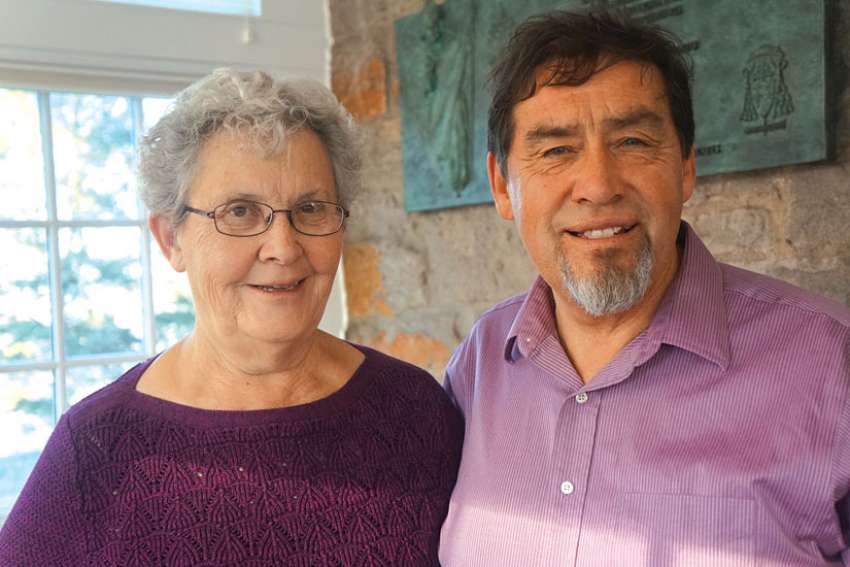They have integrated various aspects of indigenous spirituality into their Catholic prayer life and continue to explore more ways to express native culture in spiritual practises that respect the diversity of expression in one Catholic faith.
As Harry Lafond puts it, the Catholic faith and the meaning he has discovered in Cree spirituality are not “mutually exclusive.”
Before they met, Harry and Germaine had envisioned serving the Church in religious life, Harry as an Oblate priest and Germaine as a nun with the Sisters of Providence. But their religious journeys led them to an exploration of their indigenous culture and, eventually, to each other in a marriage that has produced five children.
Harry belongs to the Muskeg Cree First Nation in Saskatchewan where he grew up in a Catholic family with a Cree father and a Métis mother.
“I always had a need to be involved with the Church in some way or another even as a child,” he said.
He has played a leadership role as a member of the Canadian Catholic Aboriginal Council and executive director of the Office of Treaty Commissioner in Saskatchewan. In 1997, he was invited as an observer to the Vatican for the Synod of the Americas.
As a young man, he joined the Oblates of Mary Immaculate to prepare for the priesthood. At university he began asking questions about his Cree background. Though Cree was his mother tongue, he had nearly lost it, he said.
“We lived on the reserve, but we were not encouraged to be too involved in the Cree ways,” he said.
The turning point came with a visit to the land of the Nakota people in northern Alberta. They were holding an ecumenical gathering of many nations and tribes along with the established Church to discuss spirituality.
“From that point on I realized very clearly the Cree way of believing and the spirituality of the Cree people was not something to be ignored, but something to be explained,” Harry said. “I haven’t looked back.”
Germaine grew up in a Métis family that spoke a patois of French and Cree at home. She attended a Catholic school run by the Sisters of Providence. Her mother died when she was eight, so Germaine went to live in residence and eventually joined the order.
She met Harry while she was a nun, but both of them left consecrated life well before their friendship led to marriage. Now they are finding new ways to infuse indigenous spirituality into their Catholic faith.
For example, for the past 100 years indigenous people have gathered every July 16 at a shrine to Our Lady of Lourdes at Duck Lake, Sask. There, they hold a “Cree Mass” that begins with a pipe ceremony led by an elder before a priest celebrates the Eucharist in the Cree language.
While there is growing curiosity about indigenous spirituality, passing the Catholic faith to the next generation is challenging.
“There is a lot of anger about the residential schools,” Harry said. “People are expressing their anger by letting go of everything.
“I don’t know where that’s leading us in terms of a healthy Catholic Church in our community. In our own parish, it’s just a small group in our generation that continues to go to church.”
He believers Our Lady of Guadalupe may provide a key. The apparitions of Our Lady led to the conversion of millions of Aztecs in Mexico 500 years ago.
“What message is she delivering about indigenous cultures and Christ’s message of salvation and resurrection?” Harry asks. “I think it becomes part of the reconciliation process within the Catholic Church itself in North America.”
Reconciliation is like what takes place in a marriage when there’s a disagreement, Germaine said.
“You don’t walk away, but you look at each other, hold hands and look at it together, eye to eye,” she said.


